- You are here:
- Home »
- Blog »
- Blog
- » What is a Flip Flop Hub?
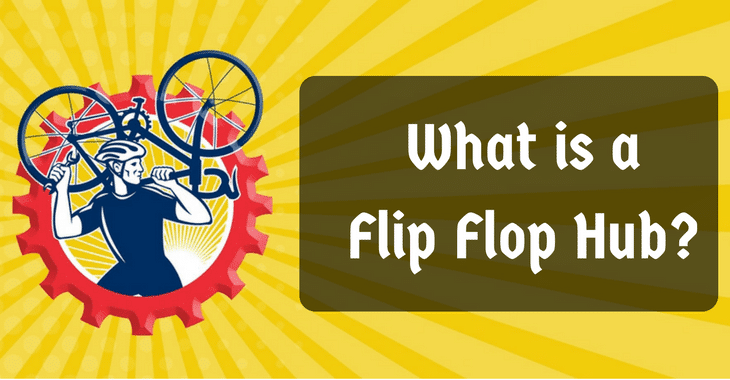
What is a Flip Flop Hub?
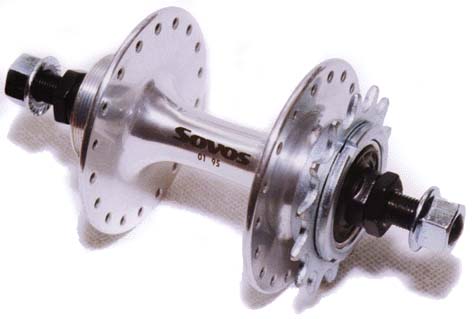
Image source: sheldonbrown.com
In bicycles, you must have seen cogs on just one side of the cycle, usually termed as the drive side. A flip flop hub has two cogs: one on either side. One is fixed whereas the other is a free wheel. The basic benefit of the flip-flop is that you can coast. You can turn the rear wheel even when you are not pedaling. You can easily switch between fixed and free. This is not possible on a fixed wheel bicycle.
You will see that your legs keep moving when the bicycle is running. People sometimes use reverse pedals to slow down their bicycle. In fact, some even remove their brakes for this purpose. This is very dangerous as brakes are necessary during your ride. Bicycles with flip flop hubs do not have this problem as you can coast. Flip flops are rather newer as compared to fixed gear.
Why ride fixed?

Image source: pinterest.com
Many around the world still uses fixed gear bicycles. It is especially preferred over free wheel during races. In fact, in games like Olympics they use brakeless bicycles. The reason is that they do not want the rider to stop immediately as many other cyclists are cycling on the same track. Also, the backpedaling speed lowering mechanism is preferred in this close environment so that the cyclists do not clash into each other.
Another reason to ride fixed is that it is more exhaustive so better for exercising. On such a bike one is pedaling and constantly moving their legs and as a result burning calories. Since you have to pedal a lot, it is also good for training purposes. People practice their pedal stroke on this kind of bike.
You can balance on the bicycle without moving forward i.e. track stand. Just moving the pedal a bit forward or backward will let you balance your bicycle. This is great for racers who are clipped on pedals right from the beginning of the track.
And lastly, you can pedal backward which is useless in a flip flop. You can go backward or slow down in case your brakes stop working.
Why ride free?
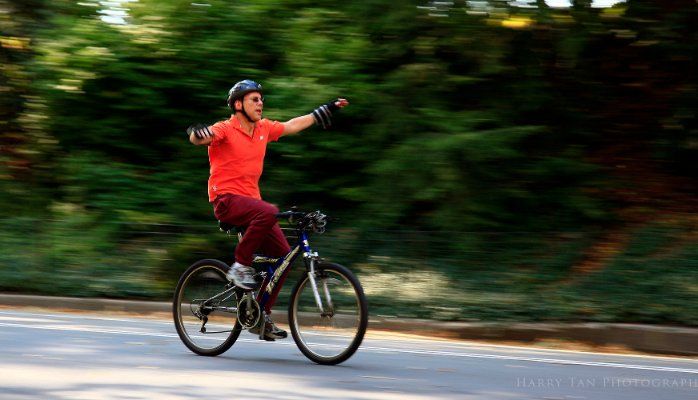
Image source: uk.linkedin.com
The one simple reason is coasting. You can go down a hill at a high speed without moving your legs. It makes the ride very smooth. It is easier than riding a fixed gear bicycle and hence is a good choice for learning how to ride a bicycle.
Freewheel bicycles can have multiple gears as well. Multiple gears on a fixed wheel bike are not as smooth because the derailleur cannot take the backpedaling pressure, and the shifting would be difficult as well. Therefore, if you want a multi-gear bicycle, then you should get a free wheel bicycle.
How to change the fixed gear to a flip-flop
If you are looking to switch from your fixed gear bike to a freewheel, you can do it at home provided you have the proper tools and a flip flop hub. There are many different kinds of hubs available, make sure to get a good quality hub. Here is how you can change the fixed gear to a flip-flop:
- First of all check the rear’s dropout shape. Check whether it drops out horizontally. It is important that the chain can You can get a doohickey, but it is not recommended. You must make sure the wheel position and chain tension will be adjusted in the end.
- Now determine the gear ratio which is the ratio of front chain and rear cog. The typical ratio is 48 tooth chain rings and a 16 tooth freewheel. But there are other options as well. The lower the ratio, the better climb on hills but slower speed.
- Now you will remove derailleur, shifter cables, cable housings and shifters. You should keep both the brakes because it is always better to have breaks for safety. Freewheel completely relies on breaks. You cannot pedal back on a freewheel as a means to slow down or stop.
- Check if the bike has double chainring crankset. For a freewheel, you should only install one. You can install one of the old or get a new one. Install it on the inside of the crank so that the chain line is straight.
- Now remove the freewheel and replace it with a flip flop hub. If there is a cassette on the freehub, you can use the complete cassette. Alternately, you can install a single cog but you will need spacers to help put the chain in a straight line.
- Now comes the turn of re-dishing which is basically to check if the rear wheel is running straight in the rear triangle. Most of the times it will but in some cases it might lean on one side which means that it needs re-dishing.
- Now using a chain tool, shorten the chain to fit the new ratio.
- Install the chain and make sure that the tension is not too high or too low. Spin the cranks to check if everything is running properly. If you hear weird noises or if the chain is loose, there must be something wrong.
Since many people do not have most of these tools available at their homes, they can take the bike to a cycle shop. Just get a flip flop hubby yourself, take it to the shop and convert your fixed gear bicycle to a free wheel in no time.
How to switch from Fixed to Free
Once you have a flip flop hub in your rear wheel, switching from fixed to free and vice versa is simple. Just remove the rear the chain and rear wheel. Flip the flip-flop to the other side and put back the wheel and chain. You can watch this video learn more about switching from fixed to free and why you would be better off with a flip flop.
Types of Flip Flop Hubs
There are three types of flip flop hubs:
Fixed/Free:
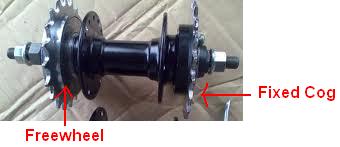
Image source: montaguebikes.com
This is the basic flip flop hub that has threaded double sided hubs on either side. One has a track kind threading and the lock ring attaches here and the other side is a single speed standard freewheel. The free wheel sprocket is usually bigger than the fixed sprocket. It helps provide a low gear.
BMX:

Image source: bmxtech.wikia.com
These flip flop hubs are made from two different freewheel threads. On one side there is a standard single speed freewheel and on the other side a special freewheel thread with a smaller diameter. They only work with a special kind of freewheels with 14 or 15 teeth. This type of flip-flop is not commonly used.
Free/Fix Hub
Affix Free/Fix hub is a simple solution to problems switching from flip flop fixed or single speed hub. You no longer will have to go through the process of switching between fixed gear and freewheel. Instead, you can just push a clever outer ring on the hub. You can engage or disengage it for making it fixed.
This lowers the time of this process significantly and takes very little effort. Instead of minutes, you get a fixed gear in a matter of seconds. And the ring sits away from the sprocket and chain, so you never get your hands dirty from all the grease.

Image source: wired.com
This hub is good for any riding whether you are commuting on a lone road with zero traffic or on a path with a lot of stops and start riding. You can effortlessly change in between whenever you think it is necessary. You can ride fixed where you deem it safe and then change to freewheel when need be.
This hub’s weight is considerably low as it is made of aluminum. It has spacers so that it fits well on 120, 130 or even 135 mm dropout widths. The bearing is smooth and spins freely and is fully sealed. You will find it with 14 or 15 teeth sprockets.
There is some additional weight of the disc switch and the clutch mechanism. But since a flip-flop requires a sprocket, lockring and freewheel, it roughly becomes the same weight as that of the free/fix. A 32 holes hub should weigh around 570 grams.
It’s worthier than a standard flip flop because of the add-ons and how seamlessly one can switch from fixed to freewheel. It is easy and safe at the same time. And the materials used make it durable so you will not have to replace one again anytime soon.
So which one should you choose?
Flip flops can fit both freewheel and fixed gear cogs. You can choose whatever you prefer for your ride. Fixed gear means that your pedals will move whereas in a freewheeling ride you can coast. A commonly asked question is which one is better?
The straightforward answer to that is ‘it depends.’
But let us see what it depends on. First of all, many fixed gear bikes come with flip flop hubs so you can experience both kinds of rides. You can coast when you are trying to learn to balance and ride a bicycle. You can simply convert it to fixed gear by loosening the chain and removing the back wheel. And then fixing the fixed gear cog and putting on the chain again.
Flip flops have been around for some time now and are considered a better option for practicing. Those who are unfamiliar with fixed gear and single speed bikes find bikes with flip flop hubs better. Those who have been riding multiple speed bicycles and now want to shift to a single speed bicycle should start off with a freewheel. It is a cruiser bike which makes the ride undeniably comfortable. The gear ratio is different because of the absence of a derailleur. It is quicker to learn as compared to bikes with gears.
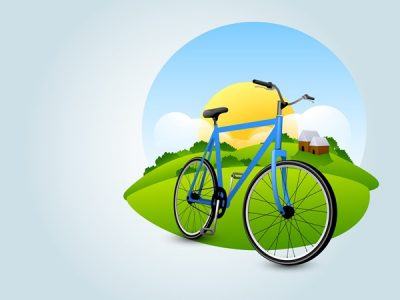
Once you have ridden enough on a free wheel mode, you can start riding a fixed gear bicycle. It will be a little difficult at start but always remember to keep your feet on the pedals. At times, you may feel that the bicycle is out of your control, but it is not that way. Once you have mastered riding a fixed gear, you will become a great cyclist. Freewheel has its set of benefits but fixed gear has always been used in races and competitions, and cyclists prefer it. The operation is quite simple: you just pedal forward to go forward and backward to go backward. You can do the latter to slow down the bicycle as well as your legs take in the forward momentum. Of course, there are breaks as well to stop the cycle.
So the better answer is it depends on you and your situation. If you are new to bicycling then, the freewheel is better for learning. If you want to become a professional cyclist, then you should use a fixed gear bicycle. It depends mainly on your needs and comfort. When you have learned how to ride properly, give both of these a try and see which ride you like better.
Conclusion
Flip flop hubs are now more popular than ever before. You can simple switch from fixed to free by just removing your rear wheel and flipping the hub. Freewheel is considered better for training and is more flexible as one can coast on it. Fixed gear, however, does not provide coasting. Brakes are essential for both of these.
It largely depends on your needs and comfort which type you should use. For learning purposes, freewheel can be a better option. Professional cyclists always use fixed gear in races because of some safety restrictions. Free/Fix hub is a simple, and easy solution, as well as you, can switch effortlessly between fixed and free ride.
About the Author Nick Soros
Hi, I'm Nick Soros. I have been an cycling enthusiast from 2006. Ezroadbike.com is my personal blog where I share my pedaling experience. No matter you are a new cyclist or skillful one, you would find useful topics in my site. Have a great cycling...
